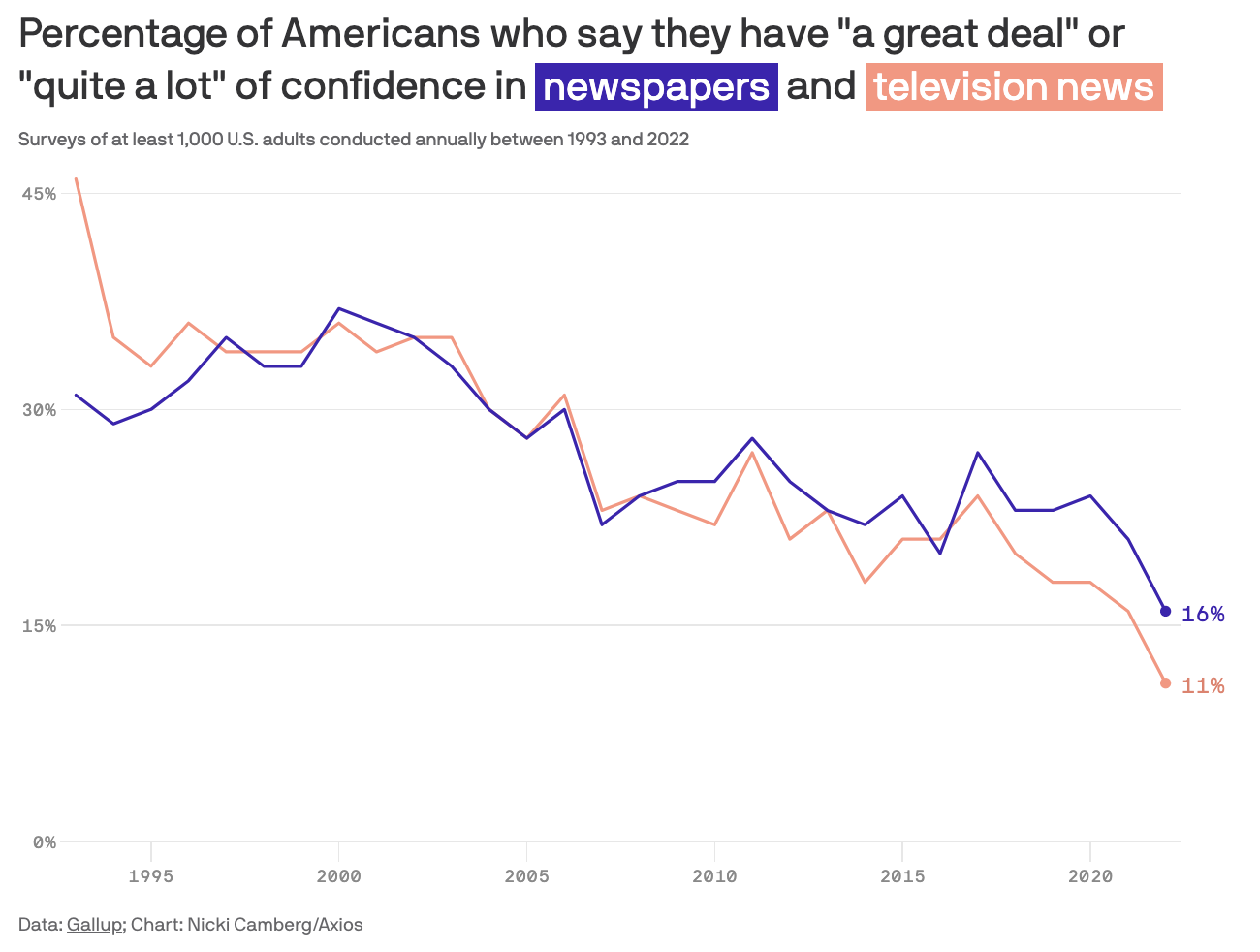News avoidance is common now. It’s easy to assume that it’s simply because the news is, well, not fun. It’s hard to listen to, and readers generally don’t walk away feeling good about the world. However, it may not be quite that simple. There is a marked lack of trust in the media, and most of those surveyed recently by Reuter’s visit aggregators, social media, and Google every week instead. Publishers and the news industry have a lot of work to do.
“Large numbers of people see the media as subject to undue political influence, and only a small minority believe most news organisations put what’s best for society ahead of their own commercial interest,” wrote Reuters Institute Director Rasmus Kleis Nielsen in the report.
So what’s next for publishers and the news industry?
Build trust
The most prominent problem people have with news organizations is a lack of trust. According to Gallup, American confidence in newspaper and television news has plummeted to an all-time low.
Here’s an Axios chart based on the Gallup data:

All this to say, news organizations are currently fighting an uphill battle with their audiences. You can combat this by being multi-sided and as fair as possible and avoiding bias wherever possible. Here are some other things you can do:
- Focus on truth and information above everything else.
- Set clear parameters for your reporters and their online interactions.
- Have clear editorial guidelines for news pieces.
Meet your audience where they are
There is a lot of evidence that paid news subscriptions have leveled off. Most younger people get their news from social media or other phone apps. In fact, 74% of Gen Z and Millennials get their information on their phone.
This means that you need to go there and provide quality reporting in a sea of opinionated influencers. Don’t undersell the importance of social media to your staff. Make sure you have a social media staff to support your journalists, producers, and reporters. If you treat it like an afterthought, you are not setting your team up for success. Social media is in and of itself a demanding job, and expecting reporters to market effectively online after researching, writing, editing, and shooting their pieces is an invitation to burnout.
Social media strategy is much more involved than posting on Facebook and Instagram. A lot goes into deciding posting cadences, proper formatting, the correct tone and trends for each platform, producing video, ensuring the correct aspect ratios, and more. Throwing this on an intern or inexperienced staffer is unfair to everyone. Just like everything else, you get out what you put in. Good social media people are worth the investment.
Advance alongside the technology
Audiences change quickly. Demographics change, platforms evolve, and as publishers, you need to ensure that you are not just keeping up but also innovating.
The most successful publishers are those who not only keep up with but advance the current status quo. Creating new ways to engage your audience and present information can ensure more people see it and establish your place in the digital publishing ecosystem.
Audio is enormous right now, for example, excelling in podcasts, Twitter Spaces, and other audio platforms is a huge opportunity.
Value communication with your audience
Above all, social media is social. People want to know that they are being listened to, and inviting and participating in healthy discourse is an art. Be receptive to questions, provide a place for moderated discussion, and let them be a part of the discourse.
People do not like being talked down to, which is a great way to alienate potential readers and develop negative perceptions of your institution and the media at large.
If you would like to know more about getting set up with our social media automation tool, we’ll give you a personalized demo and help you get started. Be sure to sign up for our newsletter to get the most up-to-date news and tips on social media.

